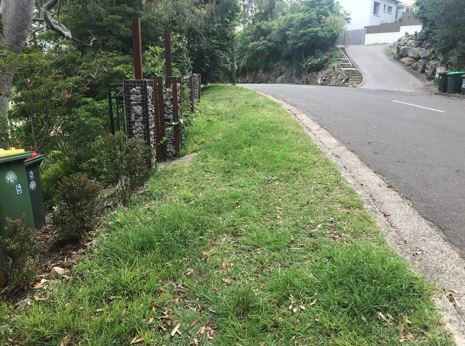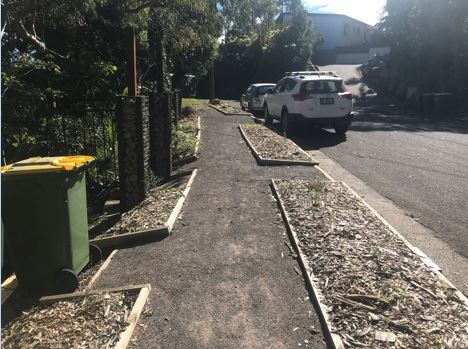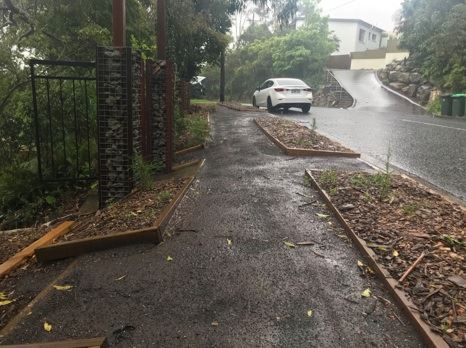Dan Clarke presented on his new roadside verge garden at the APS Sutherland Group September 2019 meeting and wrote this article which appeared in the APS Sutherland October 2019 newsletter. Look out for updates as the plants grow.
Planning
I presented my road verge garden (not fully completed) at the September meeting. The garden has been installed for about 5 months.
The main reason I was able to install the garden is because my property falls within the Sutherland Shire Greenweb mapping. This mapping serves the purpose of covering biodiversity areas in the Shire and many residential areas are mapped as potential linkages to biodiversity areas. Therefore, the Greenweb initiative provides for planting of locally indigenous plantings in such areas to enhance local native habitat and create habitat corridors. However, this does not mean you cannot install a verge garden in a non-Greeenweb area, or in another Council area.
When planning a road verge, it is important to consult your Council first and then be sure to plan it out, deciding where you want plants, paths and other features. Be sure to ask Council if you are entitled to any free native tubestock. I obtained 100 tubes from Sutherland Council community nursery and I have only used 50 so far.
Beware the 5Ps
FirstIy, consideration must be given to the 5 Ps: Pedestrians, some of who may have Prams (2nd P); Powerlines, Postman (or Postlady) and Parked/Parking cars. To quickly cover these:
- Pedestrians (with or without Prams) must be able to walk through the garden unimpeded.
- Plants installed in the garden must not interfere with any Powerlines.
- The Postman/Postlady must be able to conduct their work unimpeded.
- Parking cars must also be unimpeded by any planted vegetation.
- It is also important to not block traffic views, which might happen if the garden was on a street corner.
I would strongly advise that space is left for a footpath (if there is not one already). These are typically 900 mm wide. This path can be left as turf or constructed of gravel or mulch. If Council decides to install a formal footpath later, then they can.
Getting started
My verge is about 60 m2 (3 wide x 20 m long).

Before
I removed the grass and then planned out a series of garden beds with a pathway in the centre. I used treated H3 Pine (90 mm x 45 mm x 2.4 m lengths) to construct my beds (screwed together) and then filled them with soil borrowed from minor excavations elsewhere on my property. I then overlaid the path area with crushed blue metal dust and compacted it.
I then asked a local tree lopping service for some free mulch. This can be a risky strategy as the lopping service will simply want to dump at least half or all of their load on your doorstep and the mulch may contain anything in terms of plant species, including weeds. I was lucky enough to get a load of Liquidamber mulch, which seems benign enough, and will add much needed organic matter to my soil.

After: leaving a gravel path for pedestrians
Getting feedback
My other tips are to install a few sections at a time and see how neighbours and anyone else reacts to the space. So far, all of my feedback has been positive and I really love to see people strolling through the space and taking it in. I must complete it when I get a chance!
Species used

I have chosen a mix of species from low grasses to shrubs to trees.
Banksia serrata
Banksia marginata
Breynia oblongifolia
Ceratopetalum gummiferum
Grevillea buxifolia subsp. buxifolia
Hakea sericea
Isopogon anemonifolius
Isotoma axillaris
Olearia microphylla
Persoonia pinifolia
Poa labillardieri
Prostanthera incisa
Themeda triandra
